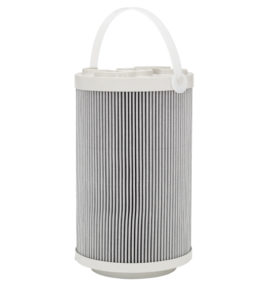By Josh Cosford

Dirt. That’s what you think of when you hear the term contamination, especially as it relates to hydraulic systems. It is, of course, a common form of contamination. But ingested evils are not limited to the same types that turn your white Yeezys brown. In fact, contamination comes in many forms, some of which you’d be surprised by. This is my list of Top 5 forms of hydraulic contamination, in no particular order.
1. Dirt. Okay, well this one is no surprise, and not only because I just mentioned it. Dirt can take the form of sand, metal chips, bronze particles or pretty much any small bit of matter that makes its way into a reservoir. Most people just call this “particle contamination,” but it’s the most common form of contamination in a hydraulic system. Most of the particles are generated when a hydraulic system is manufactured, and then again as components wear, but can also be from ingestion during maintenance.
2. Water. Unless you’re already running a high water-based fluid, H₂O in your fluid is bad news. It’s terrible stuff—reducing lubricity, increasing oxidation rate, increasing aeration/cavitation and generally gumming up the works. In extreme circumstances, like nearly every piece of mobile machinery working in northern climates, water in the system leads to ice formation when the machine sits overnight. Ice can impede flow during cold start-up, or even cause cavitation if it settles in the suction line.
3. Heat. Contamination doesn’t have to be some sort of “stuff,” but can also be a property of stuff. Hydraulic oil prefers a particular viscosity range, which for most fluids, occurs in a limited temperature range as well. As oil heats up, it becomes too thin to lubricate well, and metal-on-metal wear occurs. Additionally, hotter oil oxidizes more rapidly, causing it to break down or varnish.
4. Sludge. When numbers 2 and 3 (above) go sour, so too does your oil. Excessive water contamination, along with cycles of extreme heat and cold work in cahoots to create sludge. Sludge is black or brown congealed oil, and is more common with poor quality fluids. It can block orifices, stick onto spools or pistons to limit travel, or clog just your filters. Stick to high quality oil (ahem … synthetic) and take care of it.
5. Chemicals. Let’s cut to the chase; the only things that should be in your hydraulic fluid are the additives put there at the factory (and even that oil should be filtered before you use it). Additives like detergents, antioxidants, viscosity modifiers etc. are required if your oil is to perform at the demanding levels required in today’s machinery. But machine coolant, brine, ammonia or other incompatible chemicals have no place. They can not only create unpredictable reactions with the fluid itself, but damage seals or corrode metal components.


Leave a Reply